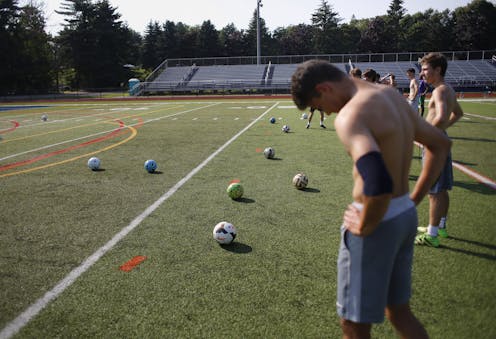
High school sports teams start practices soon in what has been an extremely hot summer in much of the country. Now, before they hit the field, is the time for athletes to start slowly and safely building up strength and stamina.
Studies have found that the greatest risk of heat illness occurs in the first two weeks of team practices, while players’ bodies are still getting used to the physical exertion and the heat. Being physically ready to start increasingly intense team practices can help reduce the risk.
I am an athletic trainer who specializes in catastrophic injuries and heat illnesses. Here’s what everyone needs to know to help keep athletes safe in the heat.
Table of Contents
Why should athletes restart workouts slowly?
One of the biggest risk factors for developing dangerous exertional heat illnesses is your physical fitness level. That’s because how fit you are affects your heart rate and breathing, and also your ability to regulate your body temperature.
If an athlete waits until the first day of practice to start exercising, their heart won’t be able to pump blood and oxygen through the body as effectively, and the body won’t be as adept at dissipating heat. As a person works out more, their body undergoes changes that improve their thermoregulation.
That’s why it’s important for athletes to gradually and safely ramp up their activity, ideally starting at least three weeks before team practices begin.
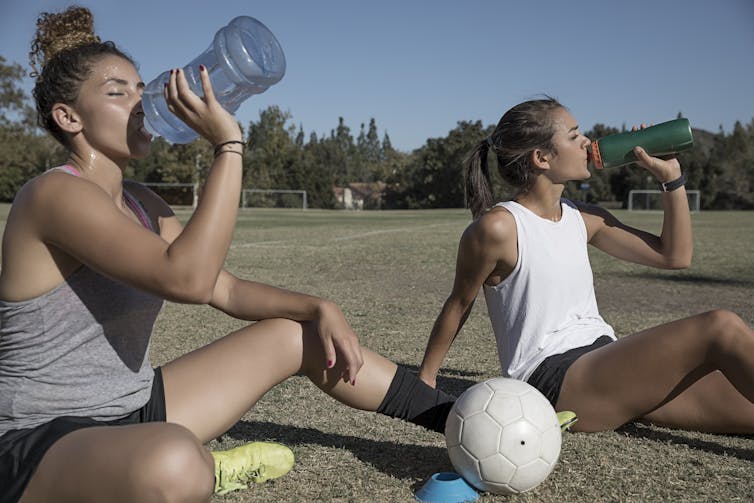
Ian Spanier/ImageSource via Getty Images
There is no hard and fast rule for how much activity is right for preparing – it varies by the person and the sport.
It’s important to remember not to push yourself too hard. Acclimatizing to working out in the heat takes time, so start slow and pay close attention to how your body responds.
How hot is too hot for working out outside?
Anything that is hotter than normal conditions can be risky, but it varies around the country. A hot day in Maine might be a cool day in Alabama.
If it’s significantly hotter outside than you’re used to, you’re more likely to get a heat illness.
To stay safe, avoid exercising outside in the hottest periods. Work out in the shade, or in the early mornings or evenings when the sun’s rays aren’t as hot. Wear loose clothing and light colors to dissipate and reflect as much heat as you can.
Hydration is also important, both drinking water and replenishing electrolytes lost through sweating. If your urine is light-colored, you are likely hydrated. Darker urine is a sign of dehydration.
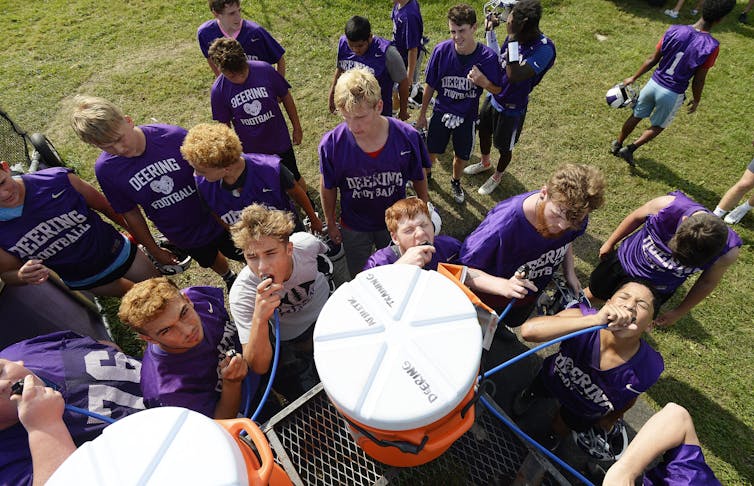
Shawn Patrick Ouellette/Portland Portland Press Herald via Getty Images
What does acclimatization look like for teams?
Once team practices start, many states require heat acclimatization processes that gradually phase in activity, though their rules vary. Some states require 14 days of heat acclimatization. Some require six days or none. Some only require it for football.
Athletes who get a head start on acclimatization can help their bodies adapt faster and more efficiently to the heat. Regardless of what your state requires, all athletes participating in all sports should acclimatize carefully.
Heat acclimatization involves adding more strain during the workout every few days, but taking care not to add too much.
For example, instead of starting the first day of practice with full pads and full contact in football, players might start with just the helmets for the first few days.
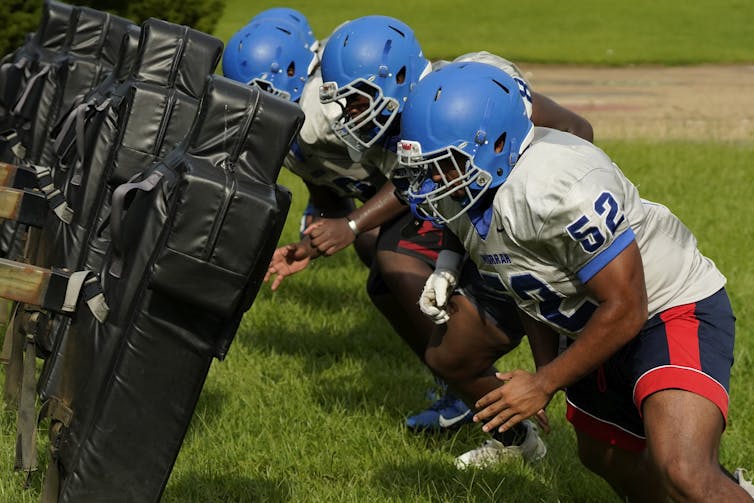
AP Photo/Rogelio V. Solis
Acclimatization is also about limits: Holding practice only once a day in the beginning and capping how many hours players practice each day can help avoid putting too much strain on their bodies too fast. Coaches and athletic trainers must also keep an eye on the wet bulb global temperature – the combination of heat, humidity, radiation and wind speed – to gauge the heat risk to players and know when to limit or cancel practice.
This isn’t just for football. Whether it’s soccer, track and field, softball or baseball, heat illnesses do not discriminate. A Georgia basketball player died after collapsing during an outdoor workout in 2019 – she was accustomed to practicing indoors, not in the heat.
What are warning signs an athlete is overheating?
If a player starts to slow down or gets lethargic, that may be a sign that they’re overheating. You might see evidence of central nervous system problems, such as confusion, irritability and being disoriented. You might see someone stumbling or trying to hold themselves up.
Most of the time, someone with exertional heatstroke will be sweating. They might have red skin and be sweating profusely. Sometimes a person with heat stress can lose consciousness, but most of the time they don’t.
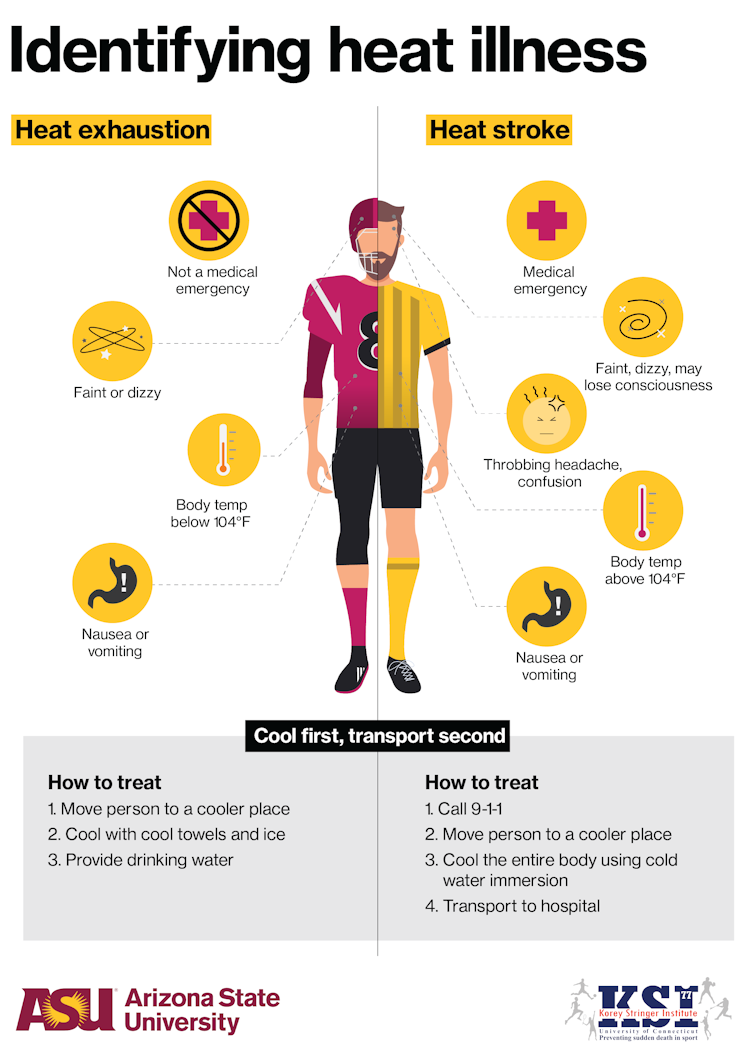
Alexander Davis for Arizona State University, Korey Stringer Institute
What should you do if someone appears to have a heat illness?
If someone appears to be suffering from heat illness, cool them down as fast as possible. Find a tub you can put the person in with water and ice. Keep their head out of the water, but cool them as fast as possible.
Immersion in a cool tub is best. If you can’t find a tub, put them in a shower and put ice around them. Even a tarp can work – athletic trainers call it the taco method: Put the patient in the middle of the tarp, put some water in with ice, and hold up the sides to oscillate them slowly so you’re moving the water from side to side.
Every sports team should have access to a cooling vessel. About half the states require it. As that expands, these safety practices will likely trickle down to youth sports, too.
If a player appears to be suffering from heatstroke, cool them down and call 911. Having a comprehensive emergency action plan ensures that all personnel know how to respond.
What else can teams do to prepare?
Exertional heatstroke is a top cause of sports-related death across all levels of sports, but proper recognition and care can save lives.
Athletic trainers are vital for sports programs because they are specifically trained to recognize and manage patients suffering from exertional heatstroke and other injuries. As hot days become more common, I believe all sports programs, including high school sports programs, should have an athletic trainer on staff to keep players safe.
![]()
Samantha Scarneo-Miller works for West Virginia University and consults for the Korey Stringer Institute, along with expert witness testimony on legal cases. She receives funding from various organizations for research, including the National Athletic Trainers’ Association Foundation, National Institutes of Health (LRP award), American College of Sports Medicine, and the Mid-Atlantic Athletic Trainers Association. She is affiliated with the Korey Stringer Institute as a member of the Medical and Science Advisory Board.
























